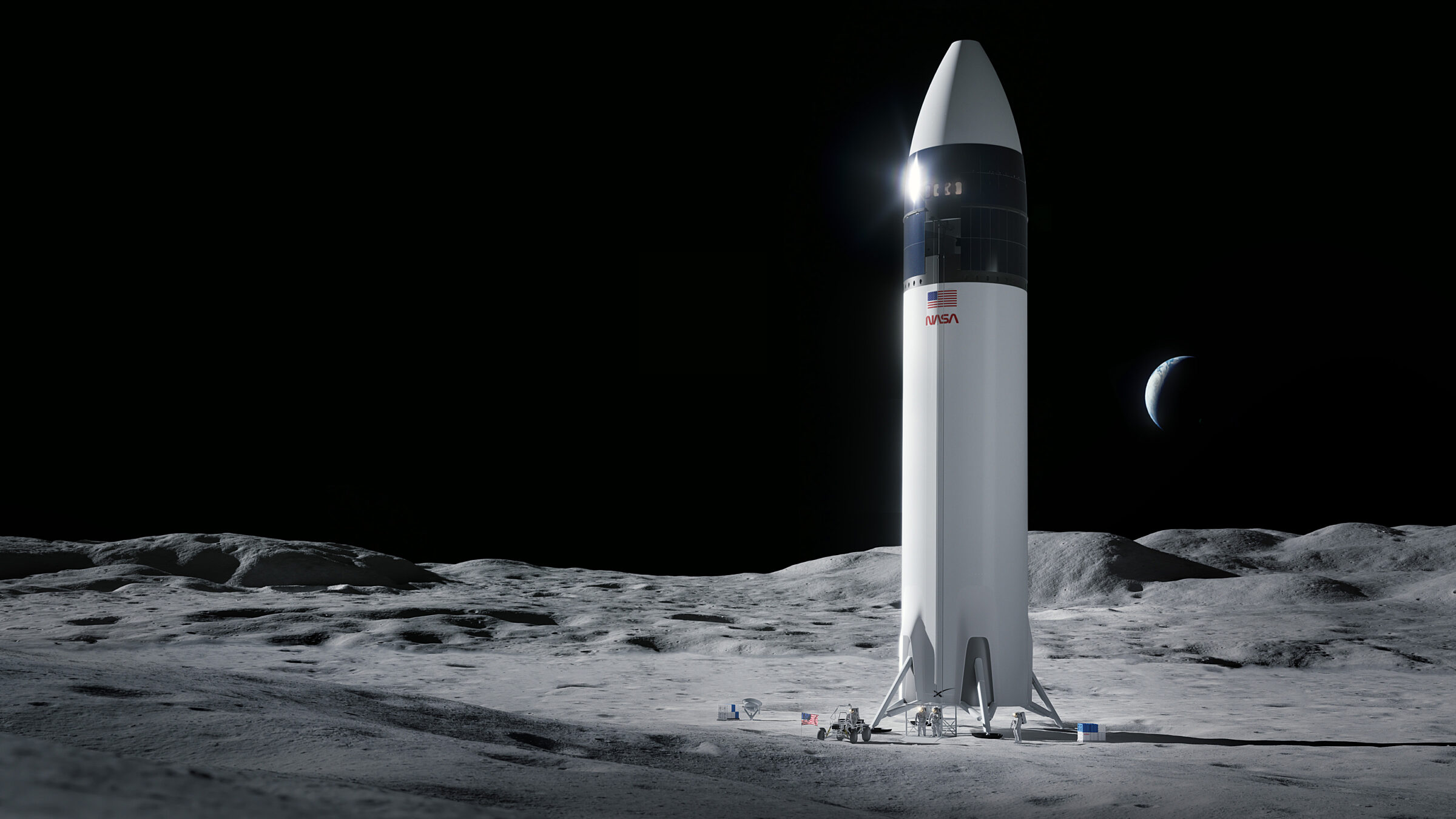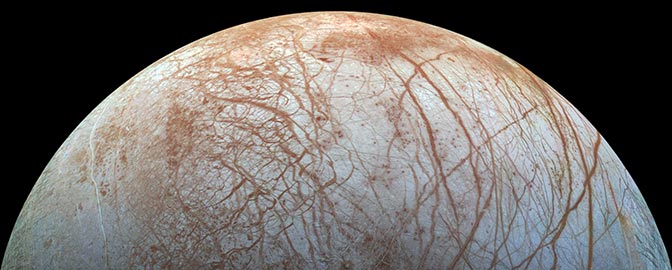Day of Action Deep Prep: Artemis
The Planetary Society supports a step-wise approach to human space exploration, with Mars serving as the destination goal directing and guiding program decisions in the near-term.
Project Artemis largely aligns with this philosophy. In our Human Spaceflight Principles, The Planetary Society states that the immediate goal of NASA’s human exploration program should be to go beyond low-Earth orbit and return to cis-lunar space; to develop the coalitions necessary to support an enduring presence beyond Earth. Artemis does this.
Artemis is a mishmash of a program, assembled out of various existing and new projects NASA had at its disposal, designed to establish a political constituency committed to a long-term lunar exploration effort. It’s not the most elegant program design; still, it has a strong chance of reaching critical mass to potentially be the next long-term program after the International Space Station, potentially lasting decades.
Artemis has cleared two hurdles that felled prior attempts to return humans to the Moon: the first was surviving a Presidential transition in 2021; the second, in 2024, was securing a congressional budget that grew funding for Artemis despite a decrease in NASA's topline. The diverse political coalition behind Artemis has proven resilient, and will likely do so again. That doesn't spare Artemis from feeling the pinch, though its overall funding position remains strong. Compared to 2024, Artemis's budget would decrease by only ½ of 1%. Funding does shift around some, with Orion and SLS's shift into production status freeing up funds used to bump up funding for new lunar spacesuits (+14%) and continue the Gateway station development, and $1.9 billion to support the two companies creating the new human lunar landers, SpaceX and Blue Origin.
Of course, inflation impacts Artemis as much as any other directorate at NASA, and a flat budget relative to 2024 still amounts to a loss of nearly $200 million in buying power. Artemis, however, is structured quite differently than NASA's science missions, having leveraged fixed-price or services-based contracts for the majority of its components. This means that Artemis is, in theory, somewhat protected from inflation, as these contracts generally place the onus of cost growth on the industry partner, not NASA. The SLS and Orion projects are moving out of development and into a regular production cadence, meaning that their costs are unlikely to spike, barring some significant hardware failure or as-of-yet-undiscovered design flaw.
Annual budgets for NASA's Deep Space Exploration Systems, including projections from the FY 2025 budget request. This incorporates funding for the SLS, Orion, Human Landing System, Gateway, and related systems. All normalized to 2025 dollars. Inflation adjustments via NASA's New Start Index.
Creating inertia for lunar exploration is the key thing to keep in mind. The Shuttle program lasted nearly 40 years. The ISS is approaching 40 years as well (and will likely go to at least 45). Both Shuttle and ISS survived political near-death experiences early on in their development, but once they got going, they endured for decades. That’s a reality we can use to ensure a long commitment to lunar exploration that builds humanity’s confidence and capabilities in deep space.
We should not gloss over the difficulties in achieving Artemis’ goals. The original landing goal of 2024 was never realistic, particularly in light of the underwhelming funding levels provided by Congress. Artemis II, which will orbit the Moon, has been delayed to the Fall of 2025. There are also significant challenges remaining in developing new spacesuits, the Gateway orbiting station, and the Human Landing System (HLS) lunar lander (more on that in the next section).
A report from NASA’s Office of the Inspector General is worth quoting from at length:
“NASA’s goal to land astronauts on the Moon’s South Pole in late 2024 faces multiple significant challenges including major technical risks, an unrealistic development schedule, and lower-than-requested funding levels. As a result, the 2024 date will likely slip to 2026 at the earliest. On top of an overly optimistic development schedule, the HLS bid protests to GAO delayed the Human Landing System (HLS) Program’s schedule by 6 months with an additional 3-month delay due to Blue Origin's follow-up lawsuit at the U.S. Court of Federal Claims. Moreover, delays in developing the Gateway will likely preclude the lunar outpost’s availability to provide communications and supplies for both the Orion and HLS during NASA’s early Moon landing missions.”

Human Landing System is our Key Priority
When advocating for human planetary exploration, The Planetary Society takes a strategic view and focuses on key elements related to our Mars goals. Namely, the Human Landing System which is now the responsibility of both SpaceX and Blue Origin. NASA has committed over $5 billion to both companies to secure a series of lunar landings (idealy) by the mid 2020s. By doing so, the space agency is also indirectly investing in several novel new technologies, including orbiting fuel depots, rapid reusability, and a super-heavy lift launch vehicle — all of which directly feed into future Mars exploration needs. This is great.
Blue Origin received its contract for the human landing system in May of 2023. NASA will provide up to $3.4 billion for development of the Blue Moon lander, with Blue Origin paying for the remaining costs.
As we stated during our formal input to Congress a few years ago, public-private partnerships to develop lunar landers is a big experiment, but an experiment worth running. We know the outcome of classic contracting methods (cost overruns, schedule delays, cancellation). It’s worth trying something new.
Congress has supported steady growth of funding for the HLS program in order to support two providers. The Biden administration requested $1.88 billion for the HLS program in FY 2024, and Congress appears likely to support that.
Legislation
As of this writing (April 2024) The Biden Administration has released its FY 2025 budget request for NASA, which provides a flat budget for its deep space human exploration program. Congress has yet to release any legislation, draft or otherwise, for NASA's budget in FY 2025.
Artemis fares relatively well given the overall budgetary situation, with SLS and Orion funding dropping as the programs move into regular production. NASA shifts this funding toward Human Landing System, new spacesuits, and Gateway orbiting lunar station projects. Overall, The Planetary Society feels like Artemis is in good shape, with the responsibility now on NASA and its partners to successfully execute the plan.
Additional Reading Materials:
- NASA Artemis Programs: Lunar Landing Plans Are Progressing but Challenges Remain
(Government Accountability Office Report from January 2024) Read this for an up-to-date status report on Artemis. - Why NASA chose Starship
My analysis of why Starship is a savvy move by NASA for pursuing a true “Moon-to-Mars” strategy.
Goals for the reader
- Explain NASA's Artemis program's major elements
- Understand the importance of the HLS, its relationship to Mars exploration, and the importance of experimenting with public-private partnerships
- Know some of the challenges facing the program, both funding and technical


 Explore Worlds
Explore Worlds Find Life
Find Life Defend Earth
Defend Earth


